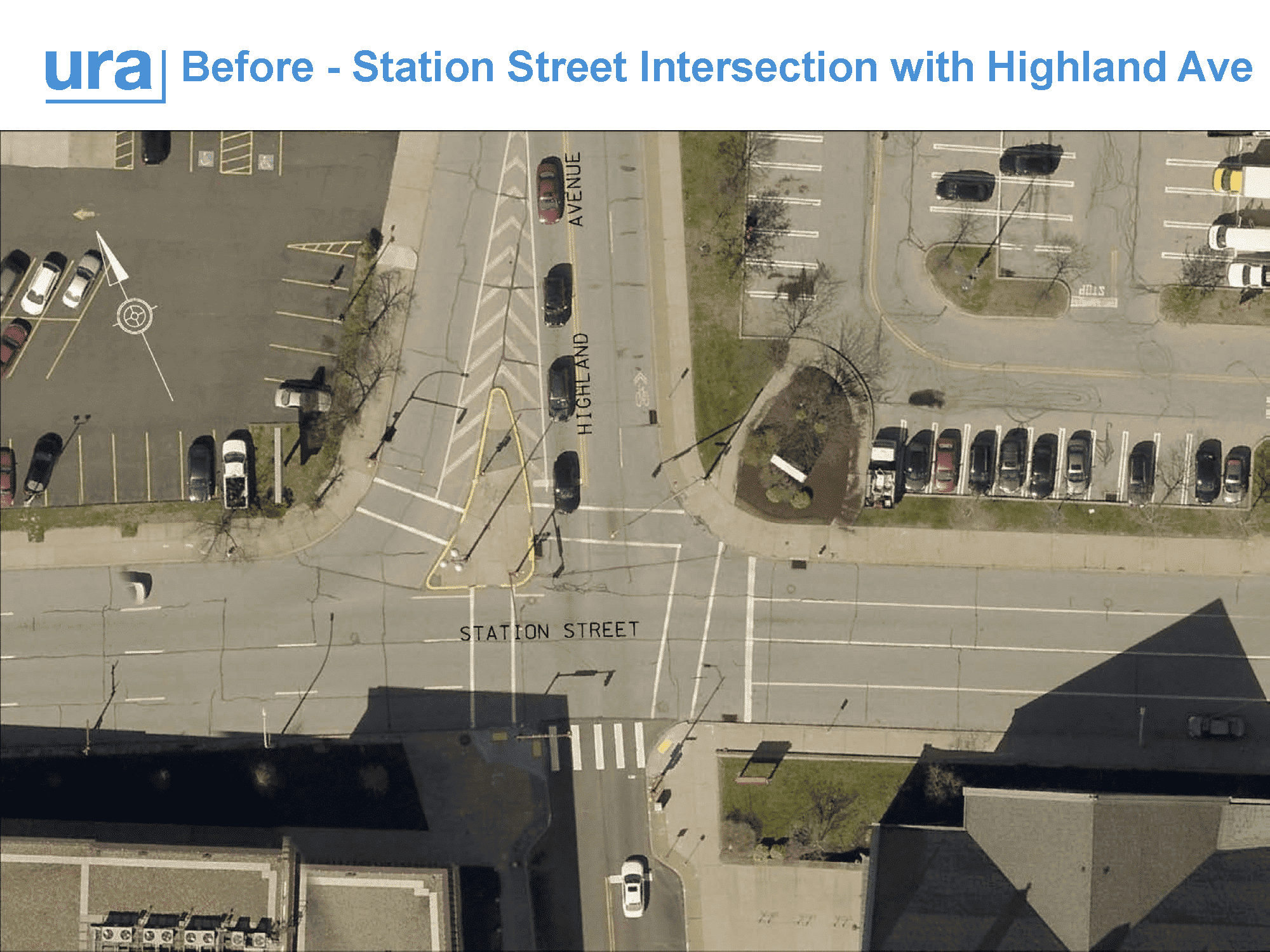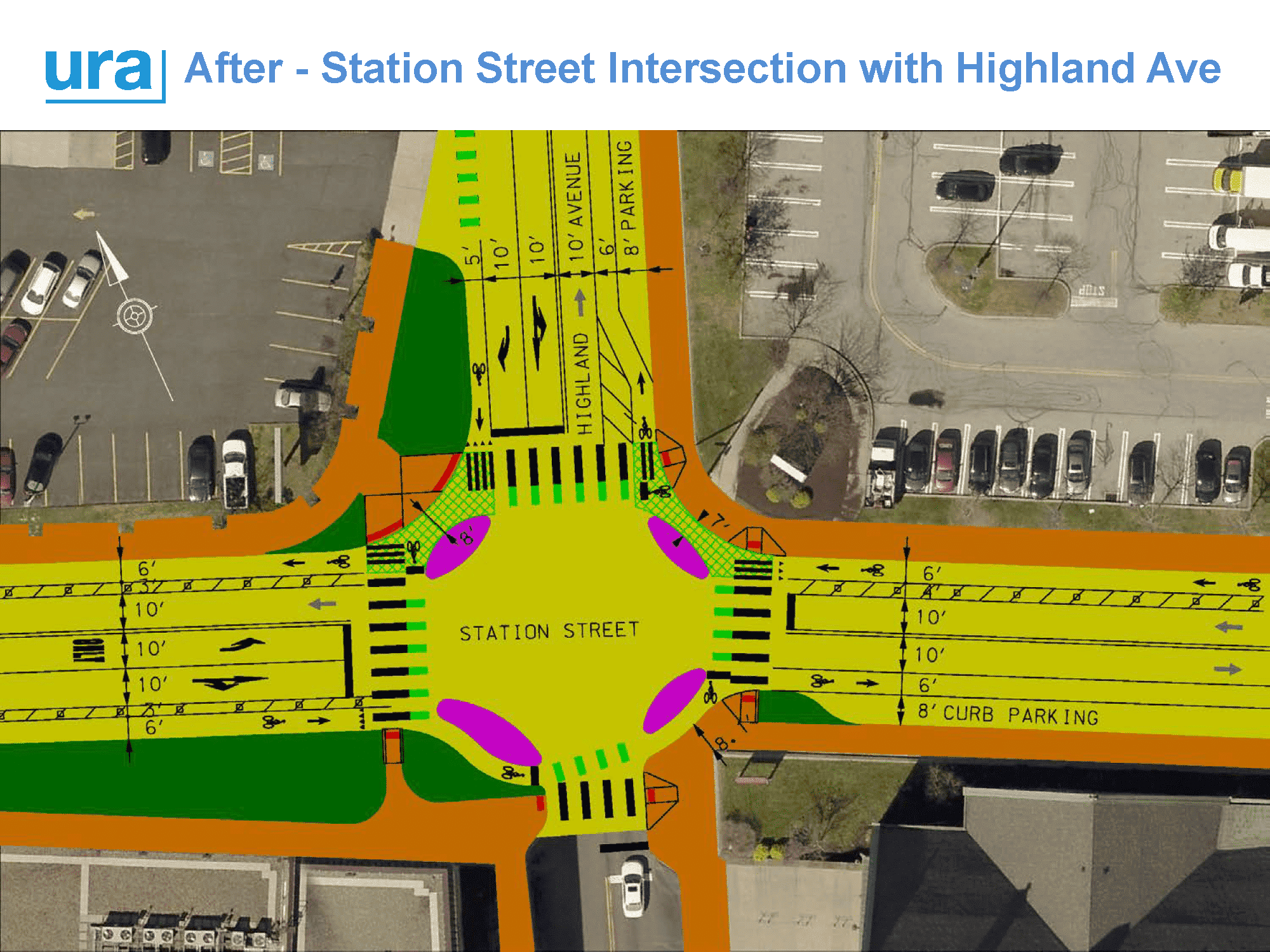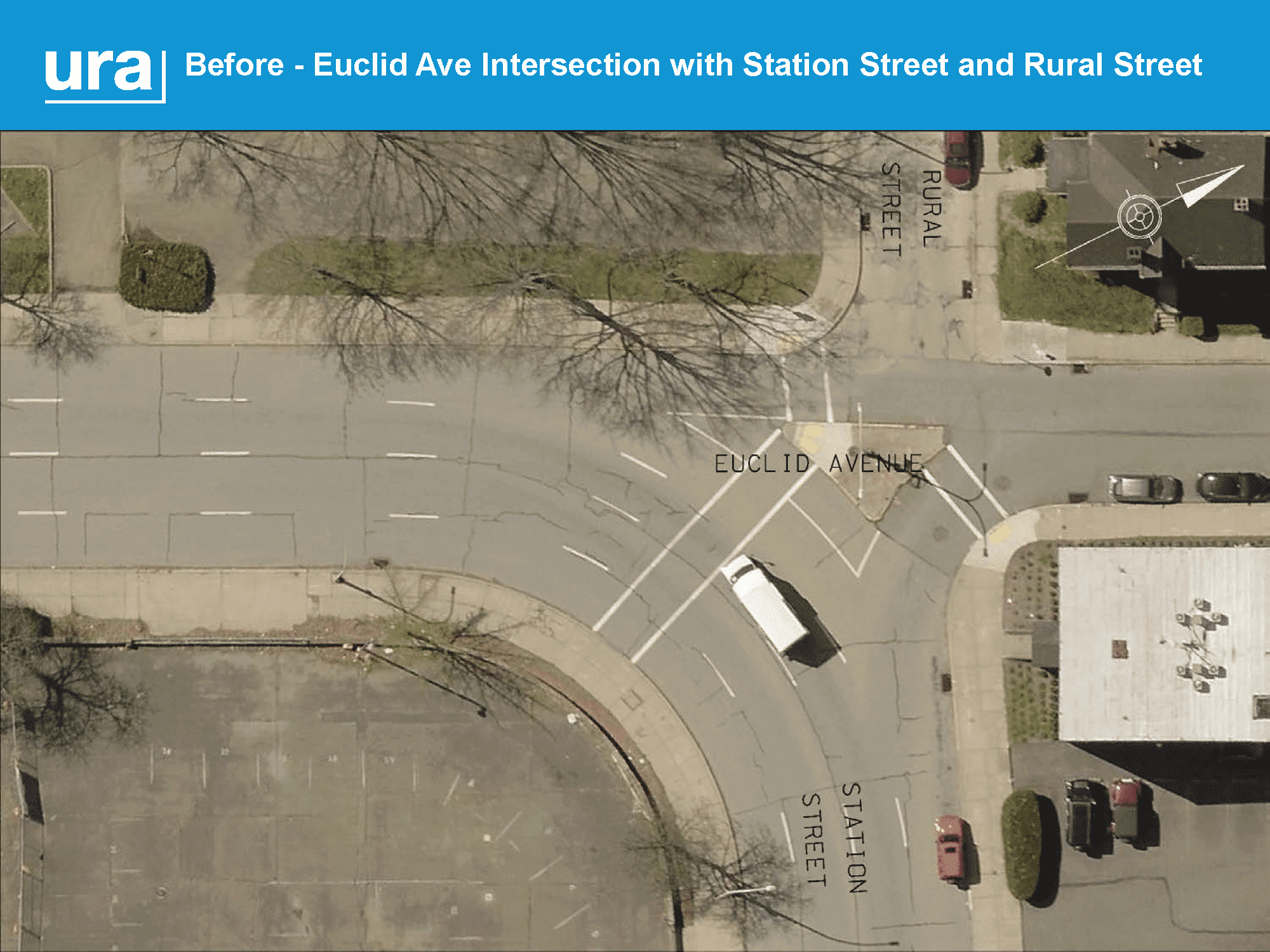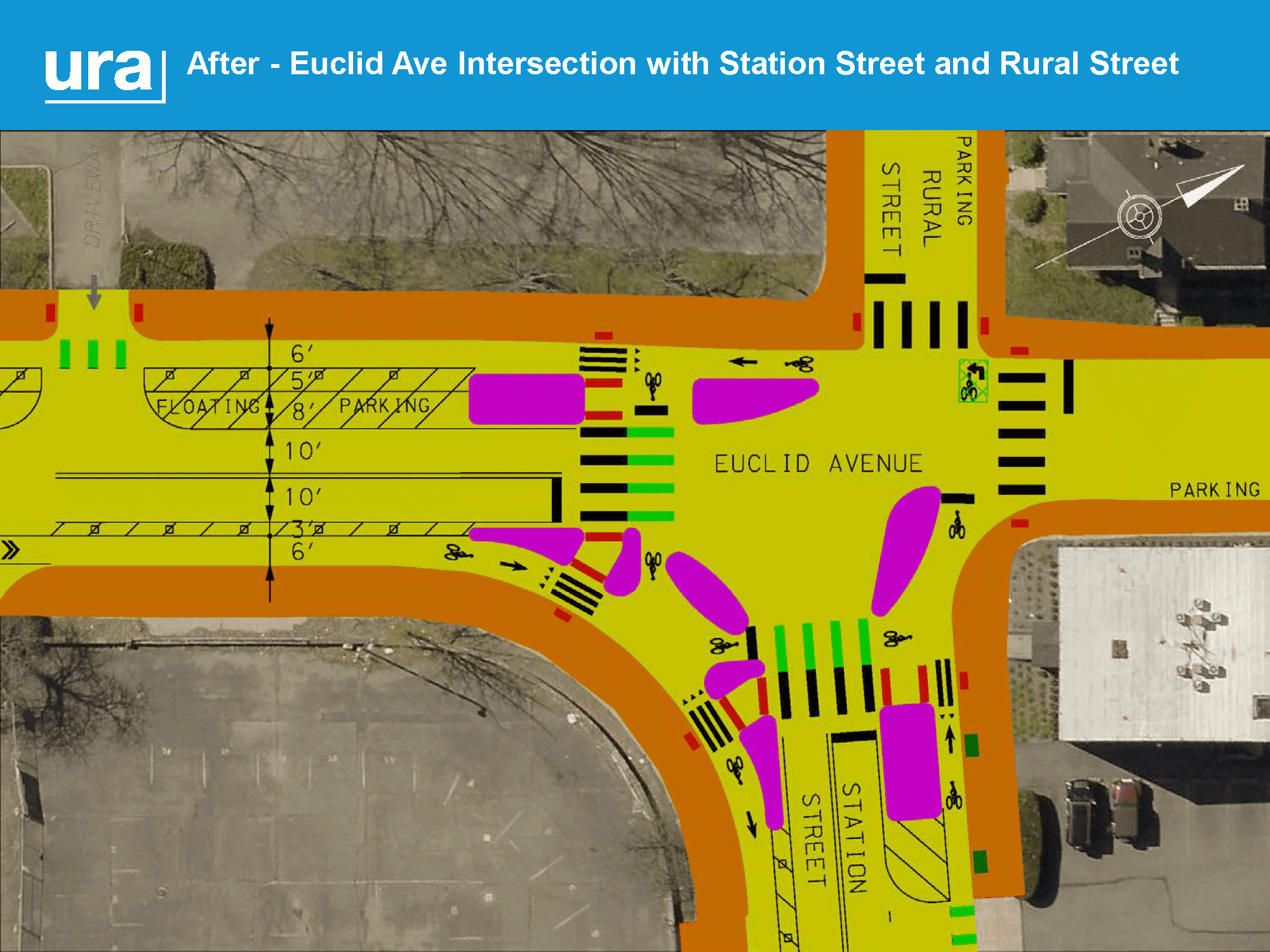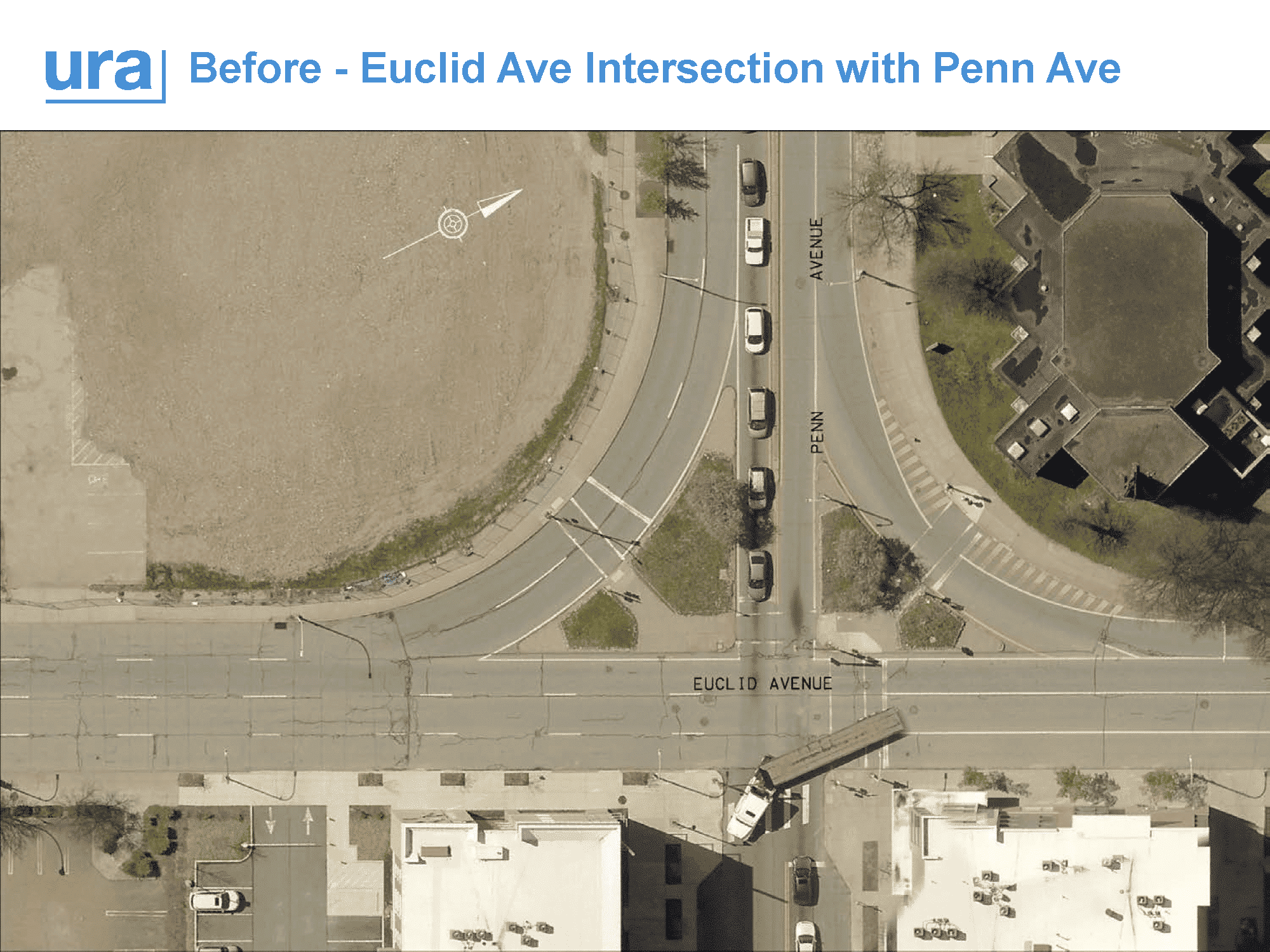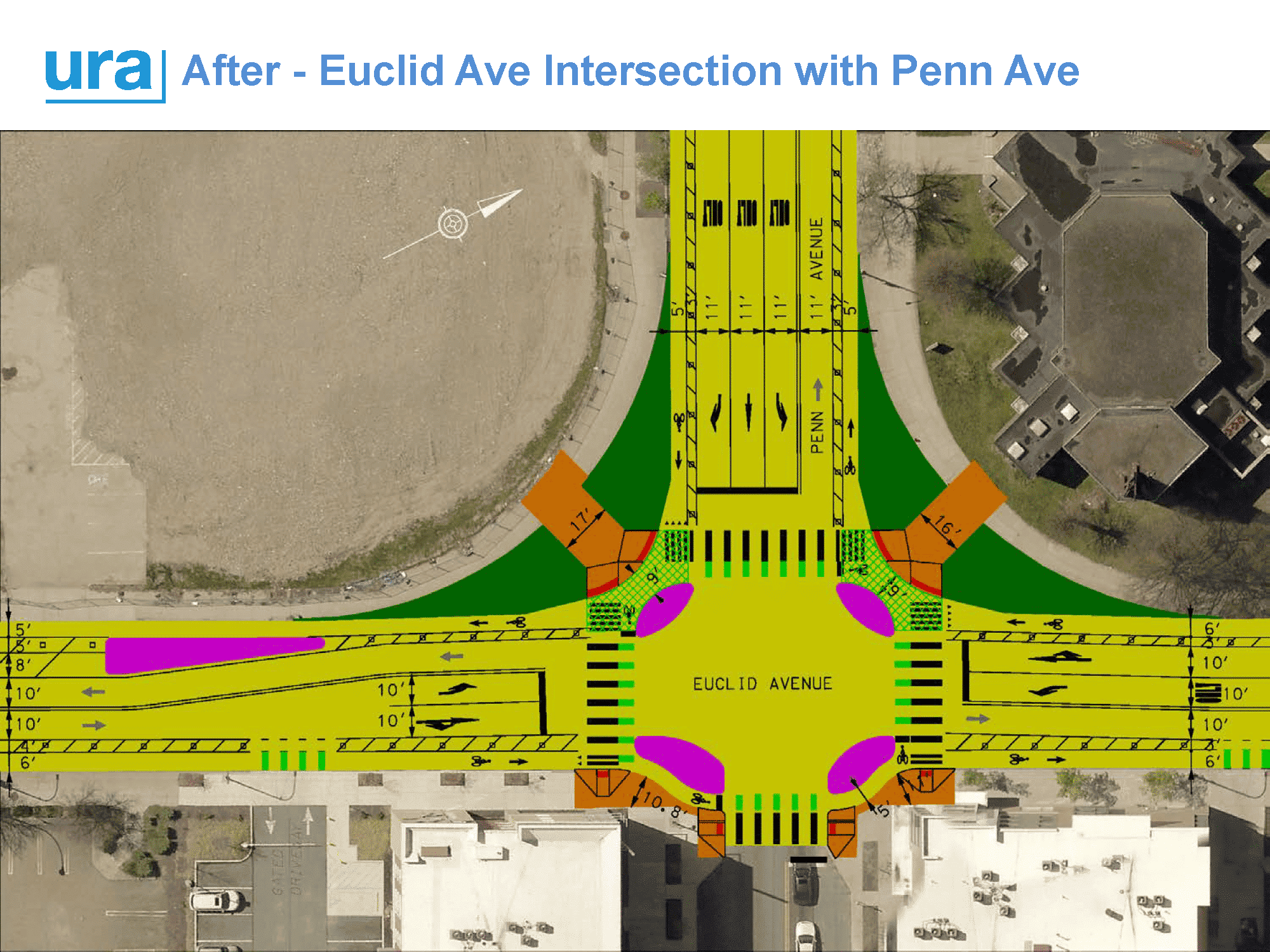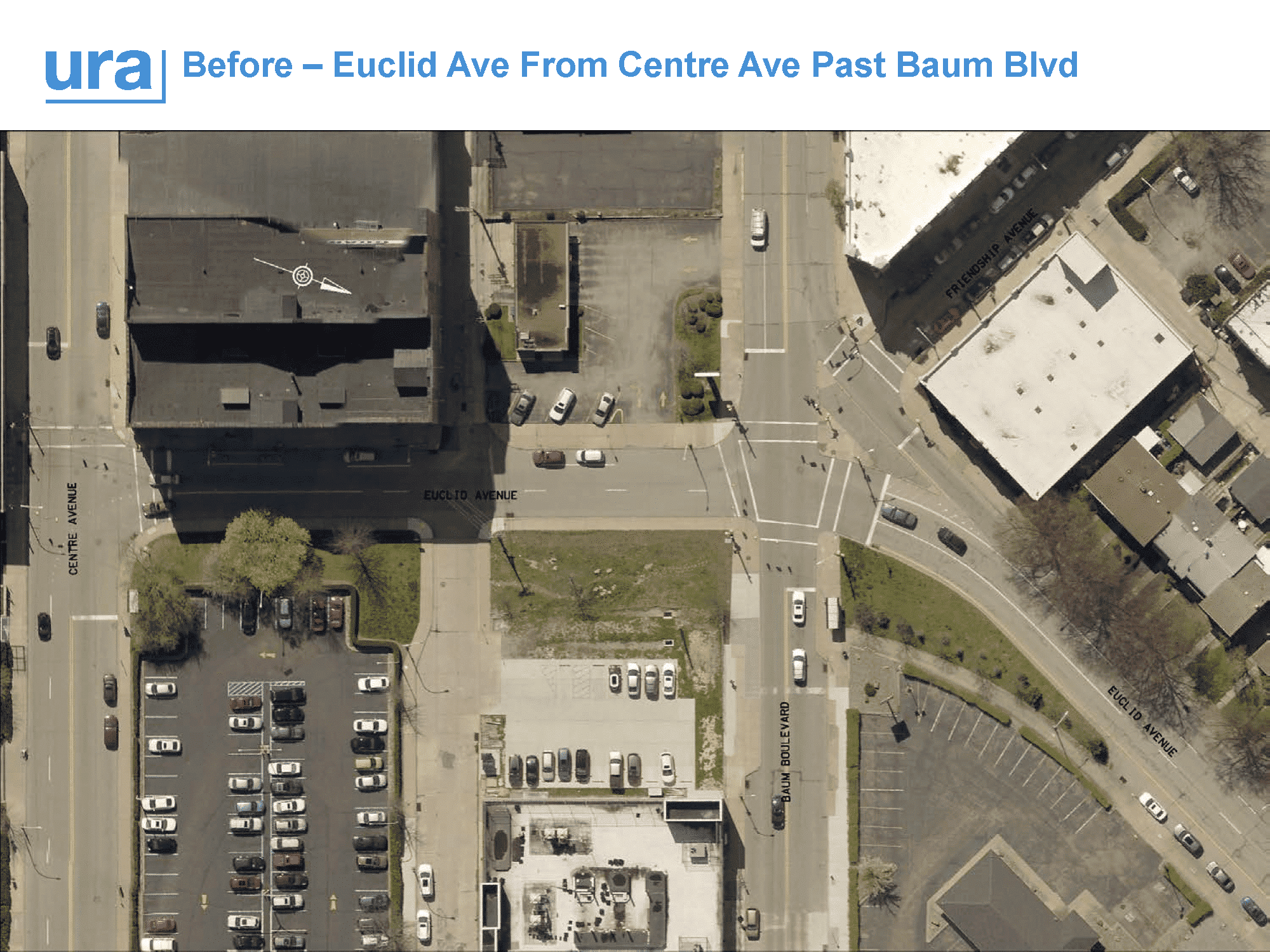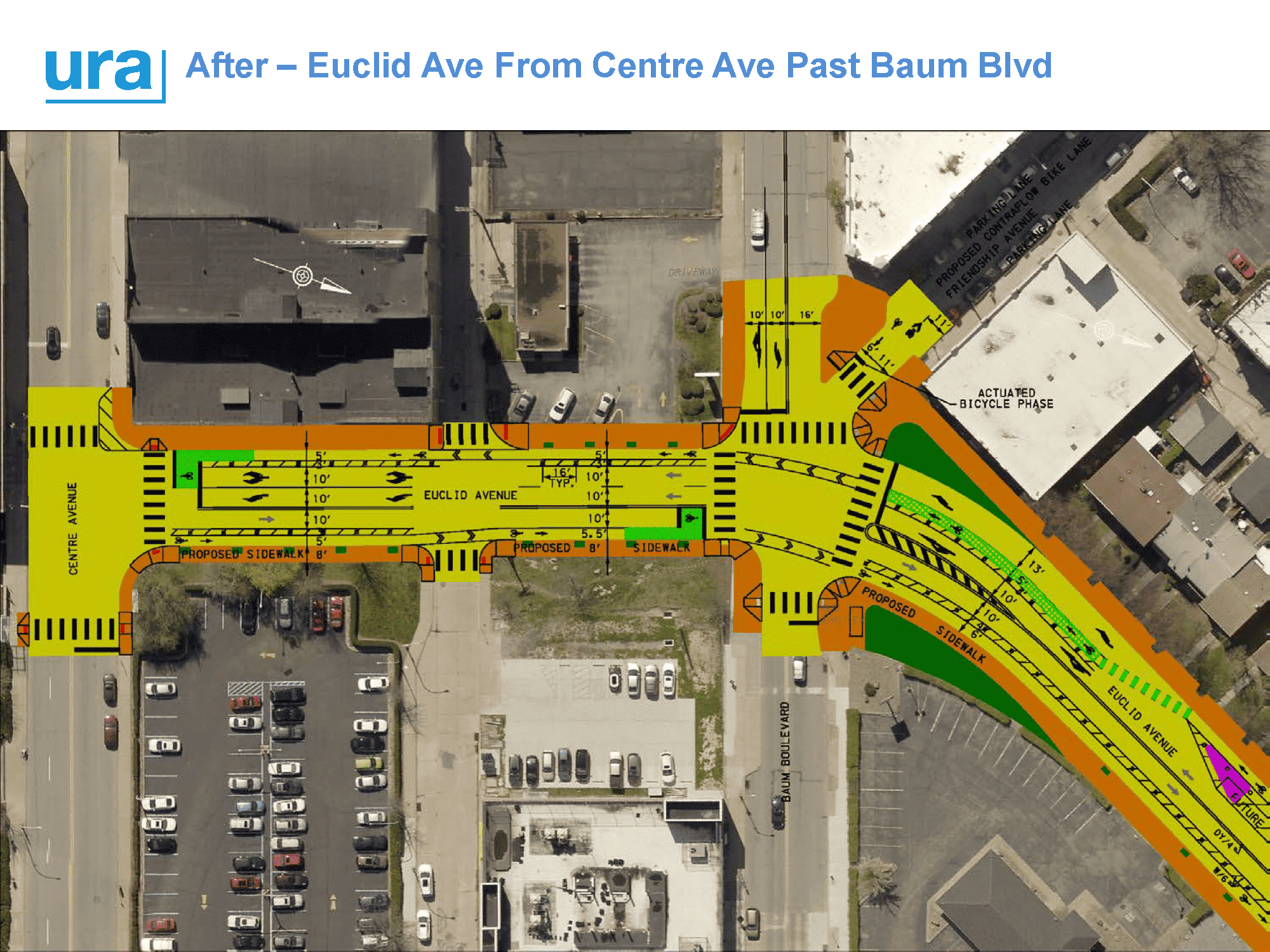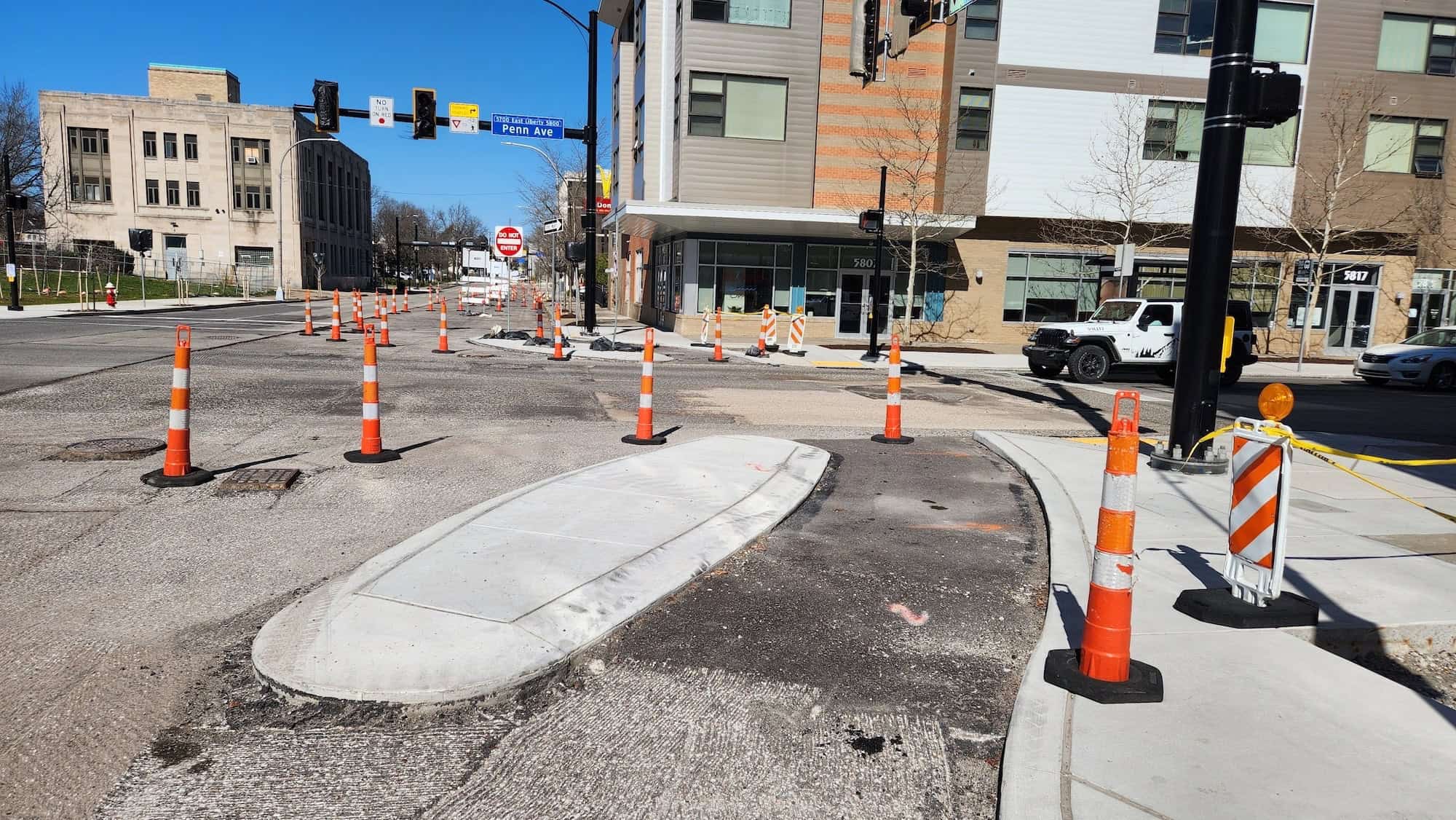
Construction is reaching its final phase & due to open in July
Pittsburgh, like most US cities, spends millions of dollars and countless resources fixing the car-oriented mistakes of the past. Previous generations of planners gutted our dense, walkable neighborhoods to instead prioritize motor vehicle storage and movement.
While we’ve since learned how these road designs not only sever communities to only serve those fortunate enough to own a car, they are straight up dangerous.
From the Hill District to the Northside, Pittsburgh has been trying to knit these communities back together to create places that are accessible to people walking, riding and rolling. It’s never easy to retrofit these roads, however there are some tools in the toolbox to assist.
Reversing the mistakes of the 1960’s
Enter Penn Circle in East Liberty. A product of the Urban Renewal era of the 1960’s, it’s fair to say that creating a four-lane ring road and leveling people’s homes for parking lots is not a successful model for designing a city. In an attempt to reverse these past decisions, the City’s Urban Redevelopment Authority has been working since 2016 to turn the single direction, 4-lane “Penn Circle” into a two-way road, complete with protected bike lanes and better pedestrian infrastructure.
According to the URA, “the Penn Circle Two Way Conversion project is an integral part of Phase 1 of the East Liberty Transit Revitalization Investment District (ELTRIDA) implementation plan. It continues efforts by the URA to reconnect the East Liberty neighborhood into an urban grid while increasing pedestrian access and improving safety.
You may have noticed that for the past year the sections of the former Penn Circle have been under construction. Once complete, likely in July 2024, these streets will have reestablished an urban grid, removing many of the road features (such as slip lanes) that should only belong on highways without pedestrians. Additionally, it will form one of the largest sections of protected bike lanes in Pittsburgh, connecting together a network of bike lanes on Negley Ave, Centre Ave, Broad St, and East Liberty Blvd.
Over 8,000 Linear Feet of New Protected Bike Lanes
Of note are over 8,000 Linear Feet of New Protected Bike Lanes, including protected intersections, first debuted on the Allegheny Circle Conversion project. One main difference between these projects is that Penn Circle will have single-direction bike lanes on each side of the street, as opposed the 2-way bike lanes along the inside of Allegheny Circle. Protected intersections are designed to mimic crosswalks and help people on bikes cross an intersection by allowing bikes to get a head start at red lights, but also by reducing the turning radius for motor vehicle drivers, requiring them to slow down when making a turn. Also, left turns on a bike can be done in two stages, eliminating the conflict points in the middle of the intersection where crashes typically occur.
A typical section of the new Penn Circle will have bike lanes on each side of the street, sometimes flexpost-separated along the curbside, sometimes protected by a parking lane, sometimes standard paint separated. However, the old Penn Circle contains several complicated intersections, and we’ll go over a few of these to see how the City was able to retrofit the two-way design and introduce the protected bike lanes and intersections. Complete details can be seen on the City’s Engage Page.
The intersection of Station St and Highland Ave will be getting a complete makeover. For instance, you can see the elimination of the slip lane, creating a much larger pedestrian area on the northwest corner, vastly reducing the distance and number of lanes that pedestrians need to cross. You’ll also find a protected intersection on each corner allowing a rider to stay in the bike lane through and around the intersection.
Where Station St meets Euclid Ave is one of the more complicated intersections to retrofit due to the offset of Rural St. The idea is to create a more standard intersection from the sweeping curve of the former Penn Circle. Through here, you’ll find larger pedestrian zones, shorter crossing, and again, protected intersections to reduce the chances that someone riding a bike can conflict with automobile traffic.
Where Penn Ave meets Euclid will see a dramatic difference. The obvious change will be the removal of the “slip lanes” in favor of a standard intersection, eliminating these highway features inside the neighborhood. This allows the sidewalks to be dramatically enlarged, and provides more protected intersection treatments for the bike lanes. Also included is a bike lane that will extend west past the new Whole Foods location, also currently being built.
The two way conversion will occur all the way to Centre Ave, the site of the former Whole Foods, adding new bike lanes the full distance. One notable feature of this new design will create an entrance and exit to Friendship Ave for bicyclists – formalizing something people on bikes already do. That block of Friendship Ave will remain one-way for cars, but will become two-way for bikes, making for a more seamless connection. This intersection will also have a bicycle signal giving riders from Friendship the opportunity to exit the intersection on an exclusive phase.
